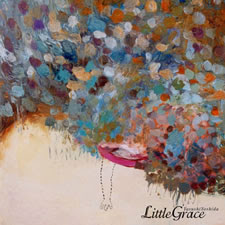
Artist: John Cale
Album: "Paris 1919"
Release Date: March 1973
Label: Reprise Records
Genre: Singer-Songwriter, Baroque-Pop, Chamber-Pop, Art-Rock
Mood: Nostalgic, Gloomy, Literate, Somber
Reminds Of: David Sylvian, Robert Wyatt, Nick Drake, Nico
Tracklist
1. Child's Christmas In Wales
2. Hanky Panky Nohow
3. The Endless Plain Of Fortune
4. Andalucia
5. Macbeth
6. Paris 1919
7. Graham Greene
8. Half Past France
9. Antarctica Starts Here
Like Frank Zappa, John Cale is a fascinating, mercurial figure. Everything he has done over the years—from his electric viola work and his development of destructive sound effects for the Velvet Underground onward—bears witness to a formidable intelligence and a commitment to what remains viable in the avant-garde tradition. Last year, Cale released his first Reprise album (following two excellent albums for Columbia), The Academy in Peril, which Warners justly called their first "classical" album. Paris 1919, by contrast, is pop-oriented with strong classical underpinnings. Indeed, it comes far closer to being a finished work of art than any previous attempt to effect a rock-classical synthesis.
The subject of Paris 1919 is nothing less than the entirety of Western European high culture, viewed roughly from a post-World War I, Dada-Surrealist perspective. The album is an epic reassessment of history, geography and art itself. Much of its music is in the Pink Floyd-Procol Harum genre—densely textured and post-Romantic. (Paris was produced by Floyd-Harum wizard Chris Thomas.) The strings of the UCLA Symphony Orchestra are used to magnificent effect, enhanced with what sounds like a mellotron.
Cale's lyrics are something else entirely. He has scored a major coup by adapting, often brilliantly, the spirit of Dada-Surrealist poetry into the pop idiom. The contrast between the somewhat destructive playfulness of Dada and the Romantic thrust of the music sets up tensions that are never resolved, nor are they meant to be. At its most accessible, the poetry is highly allusory and multifaceted. The clearest example is in the album's most beautiful cut, "Andalucia," in which impressions of a woman, a place and history are woven inextricably into a moving and mysterious entity: "Andalucia, when can I see you/When it is snowing out again/Farmer John wants you/Louder and softer closer and nearer/Then again/Needing you taking you keeping you leaving you ..." The song and the arrangement are ravishing, and to top it all off, Cale sings with a plaintiveness reminiscent of Steve Winwood.
On other cuts that have a similarly heavy sound, the lyrics are more playful: "There's a law for everything/And for elephants that sing to keep/The cows that agriculture won't allow ..." is one of several hilarious pronouncements made in Cale's "Hanky Panky Nohow," a song that, paradoxically, has a mystical, sensuous musical setting. The central image of the title cut, whose arrangement is somewhat similar to Nilsson's wonderful "Mourning Glory," is that of a woman appearing as a ghost "from the clock across the hall." And a typically Surrealist fascination with time appears again in "Half Past France." The album's one all-out rocker is the screaming, tearing "Macbeth," which perfectly conjures up the ghostly violence of the play.
Though at first all of this might seem simply to be sublime nonsense, much of it improvised, Cale employs imagery that is fundamentally cohesive in an impressionistic way and further unified by its elegiac spirit. His cerebrations are as Romantic as they are anti-Romantic, perhaps more the former, since the music finally impells us to take him very seriously. Wit, humor and irony are here in abundance. So too are metaphysical contemplation and sadness.
Paris 1919 is one of the most ambitious albums ever released under the name of "pop." In spite of and because of its irreconcilable contradictions, it requires a great deal of listening in order for its full implications to be perceived. As usual, John Cale is several steps ahead of the times. It is up to us to catch up with him. Paris 1919 is a pop masterpiece.
(source:TheRollingStone.com)
“I don’t care…People always bored me anyway…”































